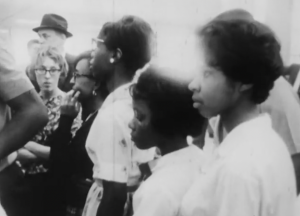Editorial: How Political Movements Bring About Systemic Change

By Nida Khan
This content contains scenes that may be too sensitive for some viewers.
In January 2020, tens of thousands of people marched from downtown Manhattan across the bridge into Brooklyn in a show of solidarity with the Jewish community. Following several antisemitic attacks, and an 18-year peak of antisemitic hate crimes in New York, Los Angeles and Chicago, members of the Jewish faith and others rallied for greater protections and a united front to say: No more. According to the FBI’s own stats, there were 953 antisemitic incidents in 2019, up 14% from 2018. This figure alone is cause for alarm, and a reason why a coalition of support is essential.
During the summer of 2020, protests against police brutality and racism broke out in cities and towns across the country following the death of George Floyd in Minneapolis. His brutal killing, captured on video, ignited a multicultural social and political movement – including a historic number of white protesters – demanding systemic change.
According to Mapping Police Violence, police in the US kill over 1000 civilians every year. Calls for reform have grown louder and louder and led to a national campaign to hold police forces accountable and establish federal legislation to address the problem.
Diverse, unified protests against rising hate crimes; intersectarian demonstrations demanding police reform; grassroots organizing and peaceful marches are ways to push back against bias and injustice.
When extremism and nationalism are perceived as a growing danger to society, it is incumbent upon the majority to combat the problem before it leads to something far worse. The Jan. 6th insurrection spawned an increase in attacks on minority and religious groups as well as fearmongering by elected officials.
The Exploring Hate: Legacy Archive Project takes an in-depth look at historical moments and movements that helped shape the social history of the United States – to help audiences absorb the lessons of the past, to promote social justice, and to champion healing and understanding. Exploring Hate provides examples of the methods and mechanisms whereby people have protested inequality and fought back against racism, antisemitism and hatred.
Today’s protests and organizing avenues seek to eliminate prejudice, break down barriers and promote systemic change. Examining historical events and practices provides insight into current issues and ways to forestall injustice.
The film, From Protest to Resistance, analyzes the antiwar movement, the Black power movement and the free speech movement of the 1960s. Focusing on three pivotal figures of the era – Stokely Carmichael, David Harris and Mario Savio – the film provides insight into their work and examines the context and challenges of their time. In one scene, antiwar activist David Harris addresses a massive crowd, urging them to throw away their draft cards, while linking the brutality of the Vietnam War to the violence and injustices back home..The film explores a defining era in American history and the broad effort to resist oppression.
In Negro and the American Promise, renowned writer James Baldwin, civil rights leader Rev. Martin Luther King Jr. and human rights activist Malcom X sit down for exclusive interviews as they share their philosophy about racism and resistance.In the fight for equality, Rev. Martin Luther King Jr. discusses facing jail time without fear. Malcom X warns of a racial explosion. The interviews mirror many of today’s conversations about civil rights and provide a rare opportunity to hear their words raw and unfiltered.
“I think someone has got to find a way of putting the present administration of this country on the spot,” says James Baldwin.
“One has got to force somehow from Washington a moral commitment, not to the Negro people, but to the life of this country. It doesn’t matter any longer – and I’m speaking for myself, Jimmy Baldwin, and I think I speak for a great many other Negroes too – it doesn’t matter any longer what you do to me. You could put me in jail, you can kill me, by the time I was 17 you’ve done everything that you could do to me. The problem now is, how are you going to save yourselves?”
Antisemitism and racism are often seen as a Southern problem, and their prevalence in Northern states has not been examined closely enough. In Confronted, Black Americans push for fair hiring practices, equal pay and racial justice in Northern cities like Queens, NY. When white Americans were directly confronted with integration in the North, their true sentiments emerged. This film features peaceful demonstrations and acts of civil disobedience at various job locations including a bank and a construction site. With interviews of both Black and white residents, Confronted captures the complexities of life in the North and the fight for racial desegregation.
Throughout this nation’s history, and around the globe, organization and action at the grassroots level has been a force for positive change.
Slave revolts – post-slavery protests – the Civil Rights Movement of the 1960s – young people organizing on college campuses – current campaigns for criminal justice reform and dismantling institutional racism – these are ways to fight back against hatred and keep our society moving toward real equality and freedom for all..
At a time when so much is on the line, seeking solutions to current dilemmas can be a route to mutual understanding and respect. The Exploring Hate Legacy Archive Project seeks to do precisely that with a close examination of our past in hopes of providing a roadmap to our common future.



















